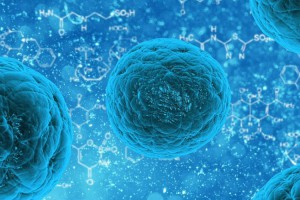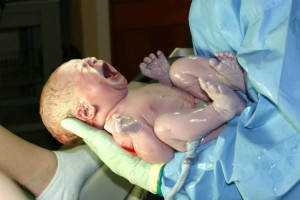Impressive potential
In recent years, stem cells derived from umbilical cord blood have attracted growing interest. Rapid advances in medical technology are highlighting their many applications, particularly in the treatment of previously incurable diseases and the regeneration of damaged tissues or organs.
To date, stem cell transplantation has been used successfully to treat more than 75 diseases, including certain cancers, type 2 diabetes, Alzheimer’s disease, Parkinson’s disease, heart disorders, and cerebral palsy. And this list continues to grow as scientific discoveries are made.
Although this topic seems recent, interest in stem cells dates back to the 1950s. Since the 1980s, research has intensified, culminating in the first successful cord blood transplant in 1988. Today, thousands of transplants are performed each year around the world, mainly in children.
To meet these needs, more than 50 public cord blood banks have been established worldwide. They aim to provide a collective resource accessible to anyone in need of a stem cell transplant.
What is a stem cell?
According to several scientific sources, a stem cell—also known as a mother cell—is an undifferentiated cell, meaning it is unspecialized and capable of transforming into different types of cells. It enables the renewal of certain cells, supports tissue development, and contributes to the proper functioning of organs.
The role of stem cells
Stem cells play a fundamental role in life. Their main function is to renew themselves, divide, and multiply to produce different types of cells essential to the proper functioning of the body. They have the ability to develop indefinitely, restore and replace damaged tissue, and can contribute to the healing of various conditions affecting the brain, blood, skin, eyes, intestines, and many others.
Advances in biomedicine are exploiting this potential to regenerate diseased, aging, or damaged tissue.
The origin of stem cells
From the moment of fertilization, stem cells spring into action to ensure embryonic development. They enable the formation of more than 250 distinct cell types, each performing specific functions in the blood, intestinal, neurological, and other systems. Thus, stem cells are at the origin of every individual from conception and are present in every human being.
In adults, they are mainly produced in the bone marrow, where they regenerate red blood cells, white blood cells, and blood platelets. Stem cells are also found in small quantities in the bloodstream and in larger quantities in the umbilical cord blood of a newborn.
This explains the importance of stem cell transplants, particularly in people with bone marrow disorders, as these cells are the basis for the production of blood components. They represent an essential alternative treatment for several serious diseases.
However, there is a notable difference between stem cells from umbilical cord blood and those found in adults.
Stem cells from cord blood
Research has shown that the blood contained in the umbilical cord is a rich source of stem cells. These cells have the exceptional ability to transform into specialized cells depending on the environment into which they are introduced. For example, when injected into the brain of a compatible person, they can generate new healthy cells to help repair or regenerate damaged brain tissue.
The strength of umbilical cord stem cells lies in their high plasticity. Since they are not yet programmed, they can adapt to the tissue into which they are transplanted. When compatibility exists—between members of the same family, for example—the risk of rejection is significantly reduced. A cell introduced into the liver will take on the characteristics of a liver cell, integrate naturally into the surrounding tissue, and perform the functions specific to that organ.
This type of treatment has a significant advantage: it does not pose an ethical dilemma, since the cells are naturally available at birth. Their effectiveness has been proven and is comparable to that of bone marrow transplants. In addition, their collection is safe for both mother and baby.
Storing umbilical cord stem cells
It is possible to store stem cells from your baby’s blood or a portion of the umbilical cord for future family use. This option is only offered by specialized private companies.
The collection procedure is intended for parents who do not have certain medical contraindications, such as HIV or hepatitis B and C. To facilitate the process, it is recommended that you begin the process at least six weeks before your due date so that you have the necessary equipment in time.
At the same time, there are public cord blood banks. These banks provide a collective resource that can be used to treat patients awaiting transplants, provided that a compatible donor is found. Approximately 25% of compatible donors are found within the family. In public banks, the chances of finding a compatible sample within six months vary between 10% and 60%, depending on the recipient’s genetic profile.
To meet the diversity of needs, it is essential to have access to donations from babies of different ethnic origins. These public banks have made it possible to offer transplants to a greater number of patients who were waiting for a therapeutic solution.
How are cord blood stem cells collected?
Cord blood stem cells must be collected quickly after birth. Otherwise, the stem cells disperse into the baby’s bloodstream and naturally begin to specialize in various tissues. This is why cord blood is collected within minutes of delivery, whether vaginal or by cesarean section.
It is a simple, quick, and risk-free procedure. The collection is performed from the already-cut umbilical cord, without pain or consequences for the baby or mother. The blood collected comes exclusively from the cord, not from the baby itself.
Collection for personal use (private bank)
If you wish to store your baby’s stem cells for future family use, you must contact a specialized private company. They will provide you with a kit containing all the necessary equipment and precise instructions to follow on the day of delivery. It is important to inform your medical team in advance so that everything is well coordinated.
The collection usually takes 3 to 5 minutes and must be performed after the cord is cut but before the placenta is expelled.
Associated costs
The initial cost for collection by a private bank is around $1,100 for one child (approximately $1,800 for twins). This fee includes the kit, the collection procedure, registration, transportation, and initial storage. After that, there is an annual storage fee of approximately $130 per child ($200 for twins). If you also wish to store a segment of the umbilical cord, additional fees will apply.
Samples are stored in specialized facilities located in Montreal, Toronto, and elsewhere in Canada. Worldwide, more than 100 private banks offer this service.
Directed donation with Héma-Québec
Since 1996, Héma-Québec has offered the option of storing umbilical cord blood free of charge when an immediate family member has a disease that can be treated with a stem cell transplant. This type of donation, called a directed donation, is intended for a specific recipient who is identified before birth.
To take advantage of this service, it is essential to discuss it with a healthcare professional during pregnancy in order to begin the process with Héma-Québec. There is no charge for this service.
Quebec’s public cord blood bank
Héma-Québec also manages the public cord blood bank. Mothers who give birth in one of the partner hospitals can make a voluntary donation, provided they have registered during their pregnancy. This anonymous and altruistic donation helps contribute to the health of a compatible patient awaiting a transplant.
Here are some of the hospitals designated to perform the collections:
- Sainte-Justine Hospital
- Laval University Hospital Center (CHU de Québec)
- Jewish General Hospital
- St. Mary’s Hospital Center
- Cité-de-la-Santé de Laval
- Sacré-Cœur Hospital
- LaSalle Hospital
- Lakeshore Hospital
- McGill University Health Centre (MUHC)
Analysis, storage, and anonymity
Each blood sample collected is analyzed according to strict standards to assess its quality. The tests are similar to those performed for regular blood donations, including detection of infections such as:
- Hepatitis B and C
- HIV (AIDS)
- Syphilis
- Cytomegalovirus (CMV)
- West Nile virus
- Chagas disease
If the sample is deemed compliant, it is frozen for long-term storage. Its minimum shelf life is estimated at ten years without loss of viability.
The sample is identified only by a reference number, ensuring a completely anonymous donation. No link is established between the donor and the recipient.
Who can donate to the public cord blood bank?
To be eligible to donate cord blood to Héma-Québec’s public bank, certain basic conditions must be met:
- Be in good health;
- Be 18 years of age or older;
- Be pregnant with a single baby (multiple pregnancies are not eligible);
- Register with the cord blood donation registry before the 36th week of pregnancy.
In addition to these criteria, the medical and genetic history of the father and mother, including that of the baby’s grandparents, is evaluated. All information collected is treated as strictly confidential.
A simple and rigorous process
Registration with the public bank includes a qualification questionnaire that takes about 30 minutes to complete. This process is designed to ensure the safety of the unborn baby and of those receiving a stem cell transplant.
It is important to note that not all samples are necessarily stored. After analysis, only samples that meet the highest quality standards will be stored for clinical use. However, samples that are not selected may be used for scientific research, thereby contributing to the advancement of knowledge in this field.
For more information or to register
- Website: www.hema-quebec.qc.ca
- Phone: 1-800-565-6635 or 514-832-5000, ext. 5253
- Email: [email protected]
Adult stem cells
In adults, stem cells are rarer and have a limited capacity for differentiation. They are generally already specialized for a specific type of tissue, such as blood, skin, liver, or bone marrow. For example, an adult blood stem cell cannot be used to regenerate liver tissue because its specialization is fixed. In contrast, cord blood stem cells have great plasticity: they can adapt to the environment into which they are introduced and transform into specialized cells accordingly. This versatility underscores their exceptional therapeutic value.
Treatable diseases: an overview
Cord blood stem cells can be used to treat a wide variety of serious diseases. Here is a summary list of some of these conditions, grouped by biological system:
Blood system:
- More than eight types of leukemia (acute and chronic)
- Severe anemias
- Disorders of red blood cells, white blood cells, or platelets
Inherited metabolic disorders:
- Several rare congenital syndromes
Immune system:
- Ataxia telangiectasia
- Kostmann syndrome
- Leukocyte deficiencies
- Chediak-Higashi syndrome
- Chronic granulomatous disease
Lymphatic system:
- Hodgkin’s disease
Muscles and bone marrow:
- Acute myelofibrosis
- Thrombasthenia
- Myelofibrosis
Plasma system:
- Multiple myeloma
- Waldenström’s disease
Other pediatric and adult cancers:
- Neuroblastoma
- Retinoblastoma
- Ewing’s sarcoma
- Breast cancer (certain forms)
A constantly evolving therapeutic potential
This field is evolving rapidly. It is therefore strongly recommended that you discuss it with a healthcare professional, who will be able to evaluate the options available based on the latest scientific advances and your personal situation.
Stem cell transplants have already helped thousands of people recover. And this is just the beginning. Thanks to scientific advances, cord blood stem cells represent real hope for patients today… and tomorrow.
Marie Fortier
The baby specialist
Updated: April 2025. Reviewed by Héma-Québec.
References :
-
Héma-Québec. (s. d.). Don de lait maternel. Repéré le 28 avril 2025 à https://www.hemaquebec.ca/don-lait-maternel
-
Héma-Québec. (s. d.). Don de sang de cordon. Repéré le 28 avril 2025 à https://www.hemaquebec.ca/don-sang-cordon
-
Naître et grandir. (2024). Le don de sang de cordon ombilical. Repéré le 28 avril 2025 à https://naitreetgrandir.com/fr/grossesse/trimestre2/bg-naitre-grandir-don-sang-cordon/
-
Société des obstétriciens et gynécologues du Canada (SOGC). (2016). Sang de cordon ombilical : Counseling, prélèvement et mise en banque. Journal of Obstetrics and Gynaecology Canada, 38(12), 1184-1193. Repéré le 28 avril 2025 à https://www.jogc.com/article/S1701-2163(16)39699-2/fulltext





